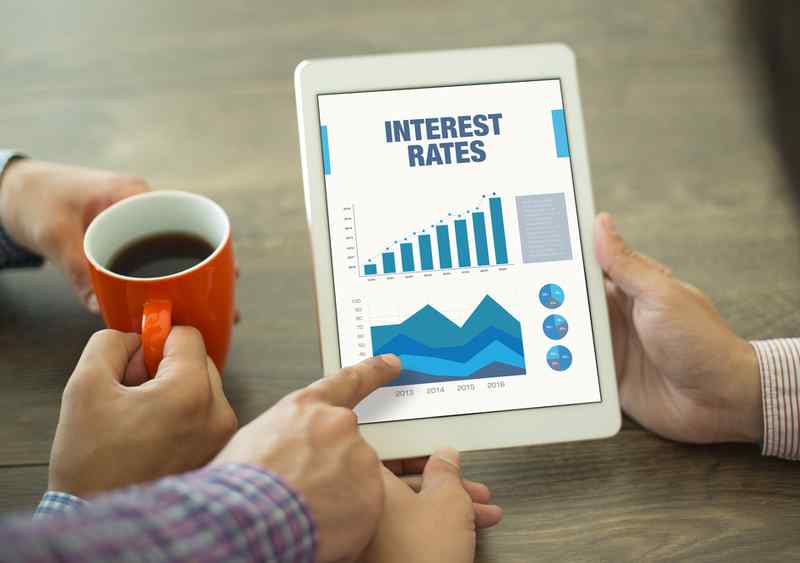How Does Inflation Affect Interest Rates?
Many individuals consider inflation to be a negative indicator of the economic situation in the country. However, this is not always the case. In fact, inflation is a natural occurrence that is related to lower interest rates. Typically, interest rates are inversely correlated to inflation. This means that lower interest rates can lead to more inflation. However, natural inflation is normal, and the Federal Reserve considers 2% yearly inflation an indication of a healthy growing economy.
Nevertheless, when inflation surpasses this healthy quota, you may look for ways to protect your finances. Keep reading to learn how to safeguard your assets and maybe even how to profit from inflation.
What is Inflation, and How is It Measured?
Inflation is the gradual rise in the price of goods and services. It can be measured by comparing the current prices with the costs from previous years. This is done using the Consumer Price Index, which measures average price changes for goods. As a result, the Consumer Price Index can indicate periods of inflation.
Since the 2000s, inflation rates have remained relatively stable, hovering around 2% to 5%. However, since July 2021, inflation has gradually increased to 5.4%, which is the highest since the 1980s.
Relationship of Inflation and Interest Rates

Typically, inflation increases when interest rates are low. This occurs because consumers have more borrowing power or money to spend. As a result, increased spending leads to economic growth and a steady rate of inflation.
Conversely, inflation decreases when interest rates are high. This results from less borrowing power. As borrowing becomes more expensive, consumers tend to spend less. In turn, demand decreases in relation to supply. As a result, prices are often lowered, resulting in deflation.
What Happens to Interest Rates During Inflation?
As previously mentioned, interest rates and inflation and inversely related, meaning when one increases, the other tends to decrease. The Federal Reserve is United States’ central bank, and it is responsible for monitoring the economy. One way the Fed ensures economic stability is by setting the federal funds rate, which directly influences interest rates. As a result, the Fed indirectly controls inflation by adjusting interest rates.
Also noted earlier, the Fed considers a yearly inflation rate of 2% a healthy indicator of economic growth. However, when inflation increases significantly, the Fed indirectly raises interest rates to slow the rate of inflation. And the opposite is true for low inflation rates: the Fed will indirectly lower interest rates.
Does Inflation Increase Interest Rates?
Inflation and interest rates have a cyclical relationship. Changes in one spur a change in the rate of the other. As a result, these fluctuations can significantly affect your savings and investment accounts. For instance, if the inflation rate surpasses your investment or savings account interest rate, you are losing money.
For example, if you have $1,000 in a savings account at an interest rate of 2%, you will have $1,020 after a year. However, if inflation has risen to 4%, you would need at least $1,040 to maintain positive growth. As a result, if inflation rates exceed your savings account interest rate, your money may be diminishing.
How To Protect Finances from Inflation

Periods of high inflation often occur, and it is important to know how to safeguard your assets during these times. Although the economy typically readjusts quickly, you shouldn’t have to sacrifice your hard-earned money until it does.
How To Profit From Inflation?
Here are some ways to protect your assets from diminishing in value during inflation. However, you may also be able to make some profit through these methods.
1. Real Estate
Currently, mortgage rates for a 30-year loan are 3.65%, which is relatively low. As a result, it is still a good time to invest in real estate and lock in a fixed mortgage rate. The future is uncertain; however, one thing is for certain: real estate appreciates. This is beneficial for real estate investors who rent out their additional properties. Typically, as inflation increases, rent does, too. Therefore, you may earn a profit if the rent rises, and your mortgage payments stay the same.
Individuals who cannot purchase a property outright may consider real estate investment trusts (REIT). A REIT is a company that owns, operates, and manages several real-estate properties on behalf of its investors. These properties include apartments, medical facilities, offices, or hotels. Several individuals can invest in these properties like a mutual fund and receive dividends. This may be ideal for investors who don’t have the capital to purchase a property or who don’t want to keep up with maintenance.
2. Precious Metals
Precious metal investments, such as gold, are considered a hedge against inflation because investors purchase limited physical assets. Unlike stocks, the price of gold is relatively stable because it is tied to its intrinsic value. As a result, gold investments are typically long-term ventures that see steady increases. For instance, between 2016 and 2019, the price of gold rose by 44%.
As the inflation rate rises to overtake interest rates, your retirement accounts can begin to depreciate. That’s why individuals may invest a portion of their retirement funds into a gold IRA that is backed by physical assets. Typically, as the dollar’s value falls, the price of gold increases.
3. Treasury Inflation-protected Securities
Treasury inflation-protected securities (TIPS) are bonds issued and backed by the U.S. government. TIPS have 10-to-30-year maturation dates. Interest rates for TIPS are fixed and are paid out twice a year until maturation. However, the most appealing part of investing in TIPS is that the principal amount rises as inflation increases. TIPS can be a way to protect assets during inflation and possibly profit as well. This is because the principal investment amount is protected — investors will not receive less than their original principal.
4. Floating-rate Bonds
Floating-rate bonds are issued by financial institutions, governments, and corporations for two to five years. These bonds appeal to individuals because they offer a variable interest rate that periodically adjusts to meet the market rate. Additionally, these bonds disperse dividends quarterly, monthly, semiannually, or annually. As a result, floating-rate bonds may be a good hedge against inflation because their interest rates typically rise with inflation.
Sum Up
Although a 2% inflation rate is a sign of a growing economy, rates are currently above 5%. This may be alarming for individuals who fear that high inflation rates will exceed their investment and savings interest rates. To protect against inflation, investors can diversify into government-backed and inflation indexed TIPS or floating-rate bonds. Additionally, some investors may even profit from inflation by investing in real estate or gold.





